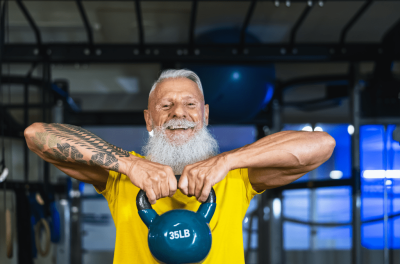It will not be the first time, nor the last that in TRAK we are standard-bearers of a healthy and active aging based on an exercise program that includes, for example, these dumbbell exercises that we present below.
In addition, we will give you some tricks for those people, patients or users, who do not have equipment at home but need an exercise routine that helps them improve their health.
For older people, are strength and endurance exercises appropriate?
We will not go into discussing again whether exercise is beneficial or not, or if it guarantees healthy aging. We already know that well and in fact, we have talked about it on several occasions in this blog.
Now, what type of exercise is appropriate?Is it convenient for my users to perform strength exercises? What if it is a patient?
Well, the reality is that these issues have not only been investigated, but that evidence confirms that it is necessary and fundamental to introduce strength exercises in those exercise protocols aimed at people over 65 years of age.
Thus, systematic reviews such as the one carried out by López P et al. or studies such as the one published by Junghoon Lee, analyze the results of introducing this type of training even in patients suffering from frailty syndrome or cancer.
This means that, as long as the comorbidities of this population segment are taken into account and the situations of each of the users or patients are analyzed individually (exactly as with any middle-aged adult), implementing strength routines in groups of people over 65 years of age is considered essential.
If you are interested in knowing more about exercise and digitalization you can not miss this updated Ebook on geriatrics.
![]() How to initiate my users in strength training?
How to initiate my users in strength training?
Strength training is critical to the metabolic health of any human being, regardless of the goal of treatment. But, precisely because of its benefits, it is necessary to find the appropriate mechanisms to facilitate adherence to the program.
Last year one of the most important magazines specialized in sports and wellness on the planet, Men’s Health, indicated in an article about initiation to this type of routines the following:
“Strength is often one of the physical qualities least understood by users of fitness centers. On the one hand, we have a part of the practitioners who want to hypertrophy their muscles through volumes of work or intensities sometimes excessive, and on the other hand, of the practitioners with fear of gaining volume of muscle mass if they work the strength, which is unlikely, since they are not volumes or intensities oriented to the gain of muscle volume. ”
That is, a poorly oriented training without well-defined objectives results in the frustration of the user, who will not observe progression in the near future.
Well, this can be extrapolated to a clinical setting when we monitor the progression of a patient and, of course, to the field of geriatrics. In any case, what we come to say is that everyone initiated into an exercise routine must go through certain phases that allow them to progress properly. And, therefore, all those professionals in charge of the protocolization and monitoring of exercise must stipulate each stage of the same, contemplating from the number of repetitions to be performed to the nutrition that the user must follow.
It is simple to understand: the improvement of the quality of life of the elderly goes through the realization of exercise, but also by adhering to a healthy diet. Would it help for a person to follow his training rigorously but then eat poorly? You will probably get results but they will not be optimal results.
Therefore, to start this user profile to strength training we must:
- Make them see the benefits of training. A high percentage of exercise adherence is found in the user’s motivation and motivation is a psychological factor. Having a conversation with them so they understand the importance of feeling good is critical.
- Introduce exercise into your routine: older people are, as we would say, animals of habits. Here’s the importance of making exercise your habit. For many it may be the motivation they need to go out or to interact with friends.
- Perform the exercise with them and relate it to their activities of daily living: “now we are lifting the necessary weight to carry the shopping bag”, “this dumbbell weighs exactly the same as a bottle of water”.
5 dumbbell exercises for seniors
As specialists in therapeutic exercise, we could not do without making a proposal for strength exercises that can be included in a protocol for the elderly. All of them are on our platform. We present it to you below:
- Dumbbell Shoulder Raise
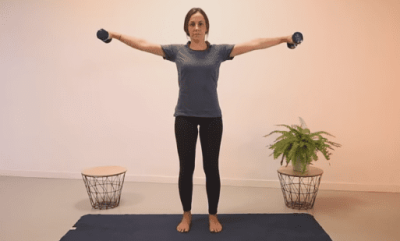
- Dumbbell biceps curl
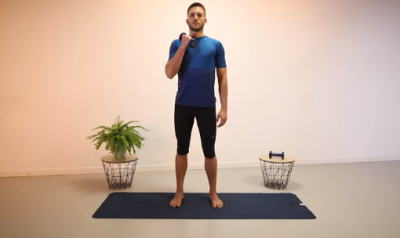
- Holding Stride + Bird
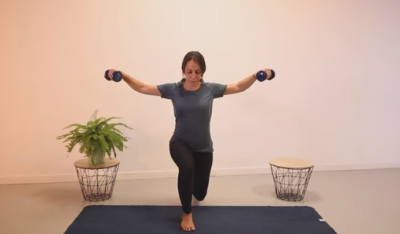
- Dumbbell press
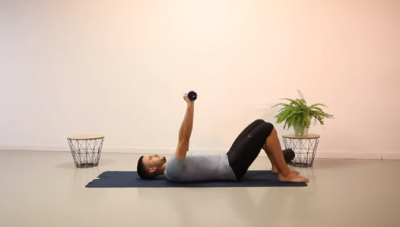
- Semi-loaded with dumbbells
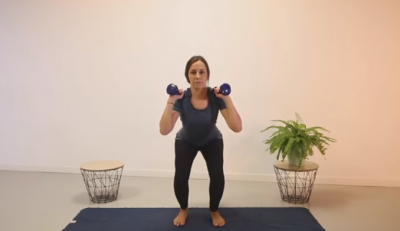
 How to initiate my users in strength training?
How to initiate my users in strength training?